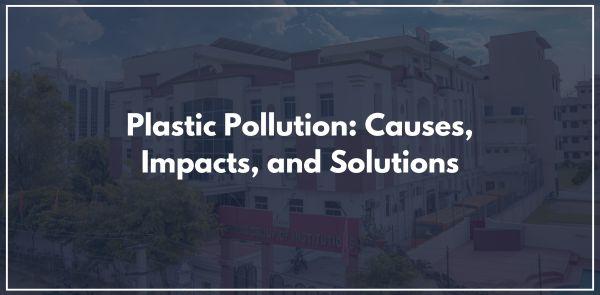
Plastic pollution is a significant environmental issue caused by the accumulation of plastic waste in various ecosystems, particularly oceans, rivers, and landfills. The widespread use of plastic in our daily lives, coupled with improper disposal and recycling practices, has led to the following key problems associated with plastic pollution.
Environmental Impact: Plastics take a long time to degrade, and many types may persist in the environment for hundreds or even thousands of years. As a result, plastic waste can accumulate in ecosystems, causing harm to wildlife and disrupting ecosystems.
Marine Pollution: Oceans are particularly affected by plastic pollution. Millions of tons of plastic enter the oceans each year, harming marine life through ingestion, entanglement, and habitat destruction. Large floating masses of plastic, such as the Great Pacific Garbage Patch, have gained notoriety for their impact on marine ecosystems.
Micro plastics: Over time, larger plastic items break down into smaller particles called micro plastics, which are less than 5 millimeters in size. These micro plastics can be found throughout the environment, posing threats to aquatic life and potentially entering the food chain.
Human Health Concerns: There is growing concern about the potential health effects of plastic pollution on humans. As micro plastics are found in water sources, seafood, and even the air, there are worries about the ingestion of these particles and their potential impact on human health.
Economic Impact: Plastic pollution can have economic consequences, affecting industries such as tourism and fisheries. Cleaning up plastic waste incurs substantial costs, and the negative image associated with polluted environments can deter tourists and investors.
Plastic pollution include:
Reducing Single-Use Plastics: Many initiatives focus on reducing the use of disposable plastics such as bags, straws, and packaging.
Recycling and Circular Economy: Promoting recycling and the development of a circular economy helps reduce the amount of plastic entering the waste stream.
Clean-Up Initiatives: Various organizations and communities engage in clean-up activities to remove plastic waste from natural environments.
Policy and Legislation: Governments around the world are implementing regulations to control the use and disposal of plastics, encouraging responsible production and consumption.
Public Awareness and Education: Raising awareness about the environmental impact of plastic pollution is crucial in promoting responsible consumer behavior and encouraging sustainable practices.

